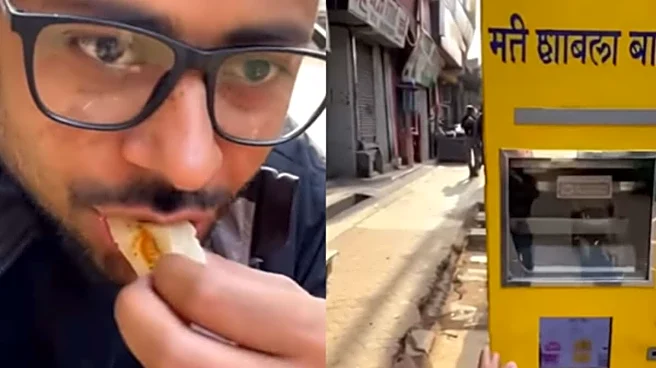
While Delhi has already spent around Rs 1.07–1.9 crore on three failed cloud-seeding trials this month, producing no measurable rain due to insufficient moisture in the clouds, a small laboratory in Jadavpur University pulled off the impossible in 1952, with just a hydrogen balloon, a few kilograms of dry ice, and sheer Bengali ingenuity. His name was Dr Sudhanshu Kumar Banerjee, head of the Institute of Meteorology and Geophysics at Jadavpur University, and he made it rain over Kolkata when the city needed it most, said a report by The Telegraph Online. Today, many on social media know him only by the viral nickname “Megh Banerji”, a beautiful Bengali coinage that merges megh (cloud) with his surname. The tag has exploded again in November
2025 after Delhi’s flop, but during his lifetime no one called him that.The Experiment That Actually WorkedIn the early 1950s, cloud seeding was still a flashy American novelty—the US had only begun large-scale trials with silver iodide. Banerjee and his tiny team had no aircraft, no foreign funding, and no fancy equipment. What they did have was a rooftop lab, a hydrogen balloon borrowed from the Meteorological Department, and homemade sodium iodide crystals.On 17 August 1952, they launched the balloon over south Kolkata carrying 10 kg of dry ice and a silver iodide generator. Within hours, targeted areas like Ballygunge, Gariahat, and Jadavpur were hit by heavy showers. The team repeated the experiment six more times that monsoon. Every single trial produced rain—sometimes so intense that residents in Lake Gardens and Tollygunge complained of waterlogging. Local newspapers splashed headlines like “Man-Made Rain Floods Streets” and “Jadavpur Scientists Play God with Clouds.”The Tragedy: India Ignored Its Own PioneerDespite the stunning results, the Government of India showed little interest. Banerjee submitted detailed reports to the Planning Commission and the Ministry of Irrigation & Power. Responses were polite but dismissive: “Interesting, but not scalable.”No follow-up funding arrived. No national program was launched. Banerjee passed away in obscurity in 1988, his papers collecting dust in Jadavpur’s archives.Today, six of the world’s ten most polluted cities are Indian. Delhi’s AQI routinely spikes above 900. And governments are pouring crores into foreign consultants to reinvent what a lone Bengali scientist achieved with a balloon and spare change seven decades ago.As one retired Jadavpur professor remarked this week, “If we had built on Banerjee’s work in the 1950s, India would have had monsoon augmentation technology by the 1970s. We could have been selling cloud-seeding services to the Middle East instead of begging for clean air.”Seventy-three years later, Delhi’s efforts are a reminder: Innovation at home was there all along—we just chose to forget it. The rainmaker’s name may be lost to time, but the Bengal sky still whispers his story.
/images/ppid_a911dc6a-image-176424568862625895.webp)


/images/ppid_59c68470-image-176405004085548906.webp)
/images/ppid_a911dc6a-image-176405256062146858.webp)


/images/ppid_a911dc6a-image-176421972984347658.webp)







